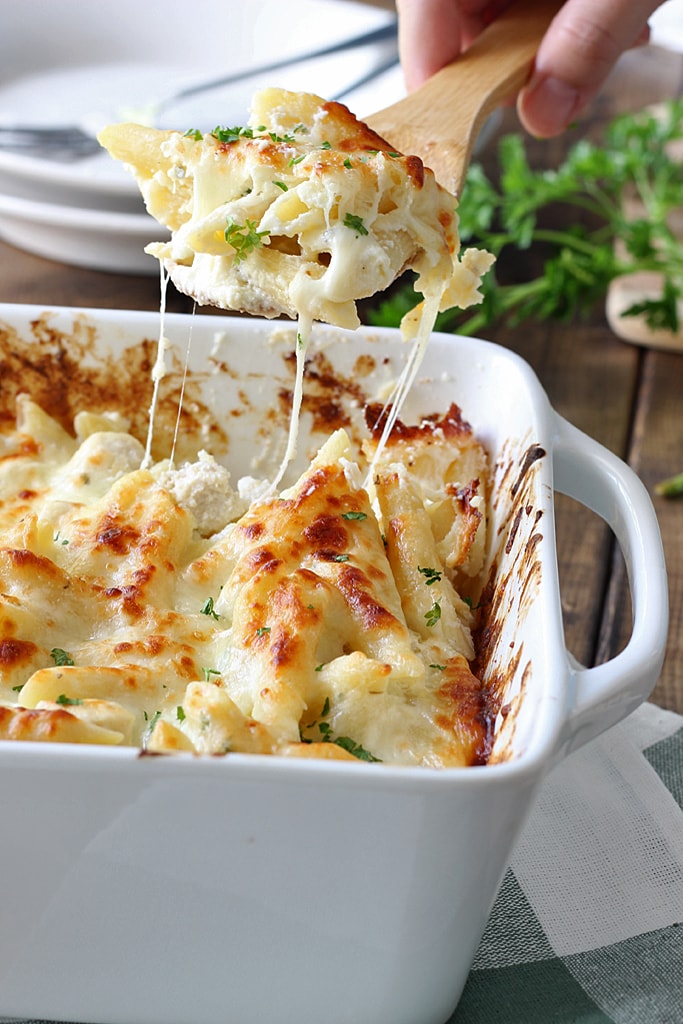Tag: Dinner
Get Cheesy This Fourth Of July!
With the 4th of July being a huge milestone in our country’s history, it is a day where families and friends get together and celebrate it at parades, cookouts, parties- you name it! And the biggest things that center these celebrations are food, alcohol, and fireworks (in no particular order!)
![]()
Now, focusing on the food aspect which I’m sure we are all most excited for, let’s take a look at one particular dish which is not only patriotic but also a cheesy delight. Here is a delicious cheese dip that you can make ahead of time so you only have to warm it up before the festivities.
The best cheese found for this delicious dip has got to be our White Cheddar at Shisler’s Cheese House. With its sharp flavor, it really pairs well with the sweet Vidalia onions which are also used in this recipe.
This cheese is so high quality and has such a creamy texture and flavor that it makes it perfect for this recipe as it focuses mainly around the cheese. Not only that but it is a great melting cheese, as discussed in some of our other articles, the type of cheese you melt is important, as not all melt the same or at all. You might know already about how good white cheddar is for melting with it being the season for grilling!
To impress even more at your event, you can keep it festive by making your own tortilla chips to go with the dip. It is very easy, all you have to do is take some flour tortillas and a star cutter and go nuts! You bake for a few minutes on 350 or until they begin to become golden.
Be warned, these are addictive so you might want to make a lot! Enjoy!
Recipe For Cheese Dip
![]()
What You Need
-
1-1/2 cups Cracker Barrel Vermont White Cheddar Cheese, shredded
-
1/3 cup mayonnaise
-
3 ounces cream cheese, softened
-
1/3 cup diced Vidalia onion
-
1/2 teaspoon pepper
-
1/4 teaspoon herbs de Provence
-
1/4 teaspoon creole seasoning
What To Do
1. Mix all ingredients fully and place in a baking dish.
2. Bake for 25-30 minutes at 375 degrees or until golden.
The Best Cheeses To Serve At Christmas Dinner
After reading the headliner of this article, you might find yourself asking, “Does it really matter what cheese I serve at Christmas Dinner?” Ask any cheese enthusiast, critic or connoisseur and they will tell you that, without a doubt, it does matter what cheese you serve at your Christmas dinner to garner the best results from your guests. Cheese has a multi-faceted purpose… that is, it its own taste that it brings to the table and the immense taste it aids in bringing out in other foods at the Christmas dinner table. That said, if you are thinking of putting just any type of cheese out on the dinner table this Christmas, you might want to reconsider using some of the cheese options listed below:
Isle of Mull
An excellent sharp cheddar with bite that finished off with a mellow taste, native to Scotland. Coming in various sizes, this is an ideal cheese to include on your Christmas Dinner table or cheese platter.
Colston Bassett Stilton
Is this a cheese or a military general? Quite the mouthful if you ask me, but if you consider the taste it packs, it might just be a mouthful… of taste! A quintessential part of any British Christmas, this stilton is one of the premier cheeses, with its creamy and crumbly texture and perfect balance of flavor, that can be paired with just about any port (wine) or enjoyed straight-up.
Clava Brie
A lighter and more delicate cheese than its French counterpart, this particular version of Clava Brie is native to the Moray coastal region of Scotland. This cheese would be perfectly paired with the more delicate dishes at the Christmas dinner.
Eve
Enjoy a little brandy with you cheese? Then Eve is for you. A cheese made from goats’ milk, Eve is soaked in a cider-based brandy and wrapped in a vine leaf. Different from other goats’ cheeses is Eve’s pungent aroma. Similar to other goats’ cheeses is its delicate and creamy texture.
Smoked Ardrahan
Any fan of bacon would be a fan of this cheese. Its soft, cold smokiness intertwined with a smokey bacon flavor makes this cheese a literal “standout” at the Christmas dinner table.
Grimbister
Another excellent option to have on the Christmas table, native to the Orkney Islands of Scotland. If you are a fan of Wensleydale, a cheese native to England, you will surely love Grimbister at your Christmas dinner table.
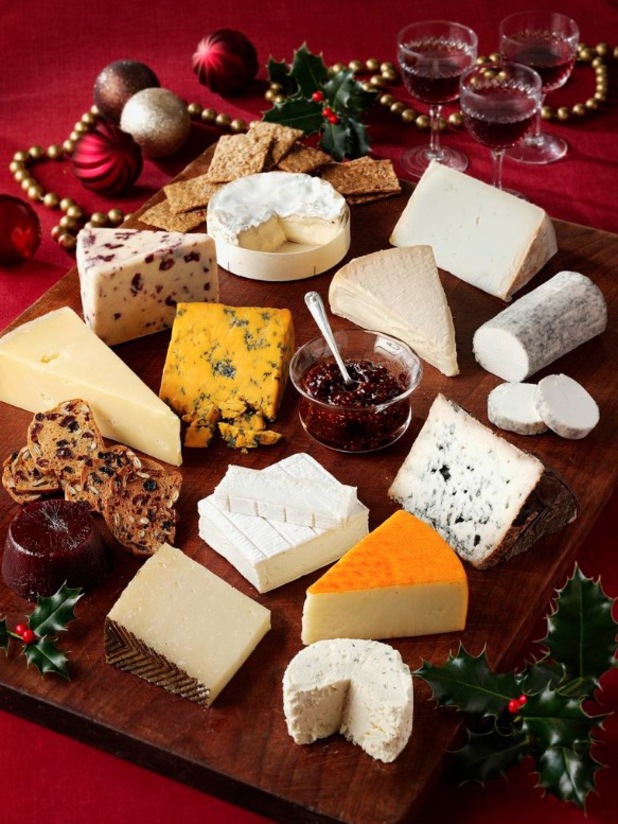 Source: http://i3.cdnds.net/13/51/618×824/screen-shot-2013-12-20-at-115342.jpg
Source: http://i3.cdnds.net/13/51/618×824/screen-shot-2013-12-20-at-115342.jpg
Chicken Paprikash: Old-Fashioned Never Lost Its Touch!
When 16th century explorers began sending new foods back from the Americas, it was as if a giant cornucopia had been emptied over Europe. Italy and Spain made tomatoes a staple of their cuisine, potatoes found a home in northern Europe and Turkey began raising and exporting red peppers, which the Hungarians found a perfect match for their soil and, eventually, their cuisine. The peppers’ odyssey eventually lead to Hungarian paprika and Hungarian paprika lead to one of the world’s great peasant dishes –Chicken Paprikash.
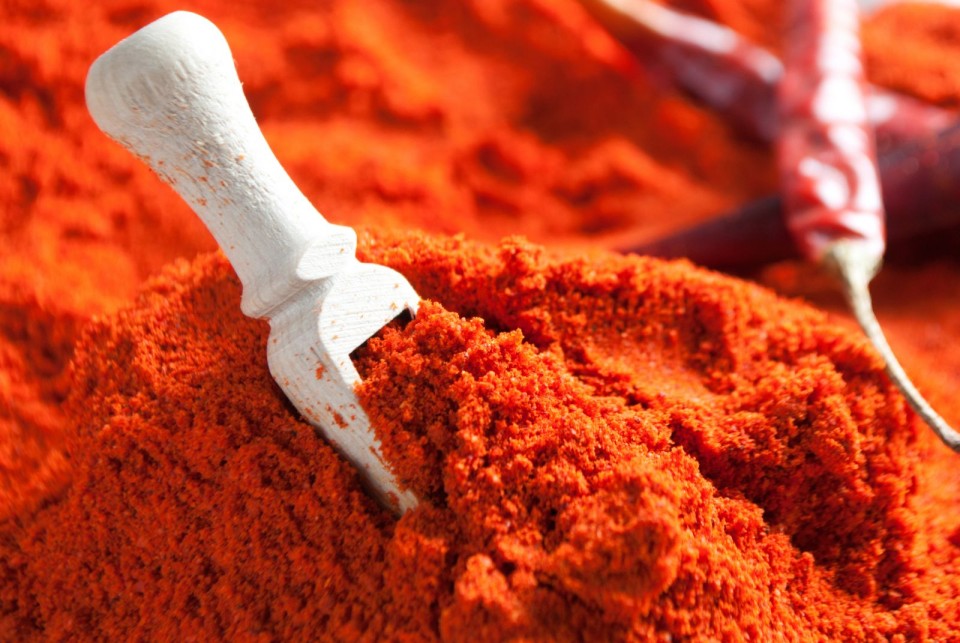
What is Chicken Paprikash?
“Paprikash” comes from the Hungarian word for paprika, and describes a range of stew-like dishes made with meat, onions, lots of paprika, and sour cream. Tomatoes are not found in the authentic Hungarian dish, which gets all of its red-orange hue from paprika, but you will hardly find a paprikash anywhere in American that does not include tomatoes. Though chicken seems to have been the original meat used in paprikash, lamb, pork and especially veal are also used, and mushrooms make a good meat substitute for vegetarian versions. Traditionally, Chicken Paprikash is served with dumplings, but wide noodles have now become equally common.
The History of Chicken Paprikash
Although it’s agreed that Chicken Praprikash is an authentic Hungarian dish that dates back several centuries, there are no precise details on when it entered the cuisine mainstream. My belief is that, unlike goulash, which was invented by trail herders on the move, Chicken Paprikash originated among the farmers of southern Hungary. This rich, sunny agricultural district supplied the peppers from which paprika is made, and two towns in the region – Kalocsa and Szeged – are known for their excellent paprika. The fact that this originated as a chicken dish also argues for its farm origins. Paprikash, like “coq au vin”, is a dish designed to use up older, tougher birds past their prime – a protein source always available on farms.
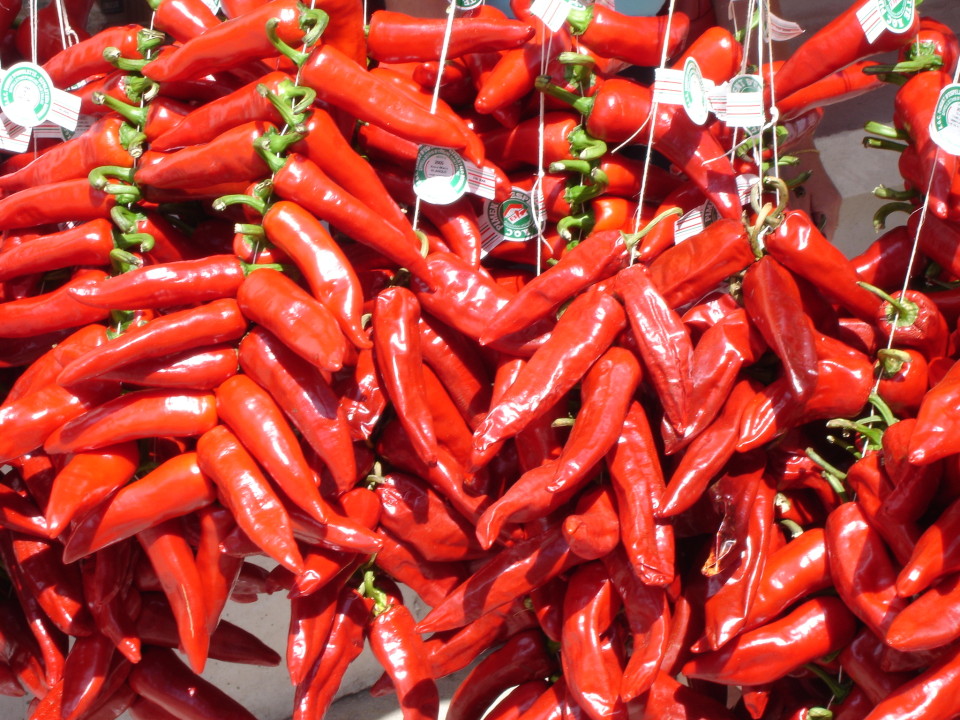
It’s All About the Paprika
Paprikash is one of the few dishes in the world that takes its name from a spice – in this case, the spice that became the backbone of Hungarian cuisine. Originally imported from Turkey, the peppers that are dried and ground into paprika have been grown in southern Hungary for nearly 500 years.
In America, paprika comes in two varieties, sweet and hot. In Hungary, where growers and manufacturers blend paprika with the care of vintners blending grapes for wine, there are seven official gradations. From mildest and sweetest to the strongest and spiciest, they are:
- Special Quality
- Exquisite Delicate
- Pungent Exquisite Delicate
- Rose
- Noble Sweet
- Half-Sweet
- Strong
If you want to make paprikash, goulash, or any other dish involving paprika and the jar you have has been sitting around for a year or so because you only use it as a garnish, leave the old stuff on the shelf and buy a fresh can of the high quality imported stuff. The taste difference is well worth the relatively small expense.
How To Make Chicken Paprikash
As I noted earlier, Chicken Paprikash can also be made with lamb, veal, pork, or with a medley of vegetables like mushrooms and carrots. It’s an easy dish to make no matter what meat you choose, and is made essentially the same way, whether you try the original Hungarian Chicken Paprikash recipe without tomatoes or the more familiar version with tomatoes (which Hungarians call Chicken Paprika Stew).
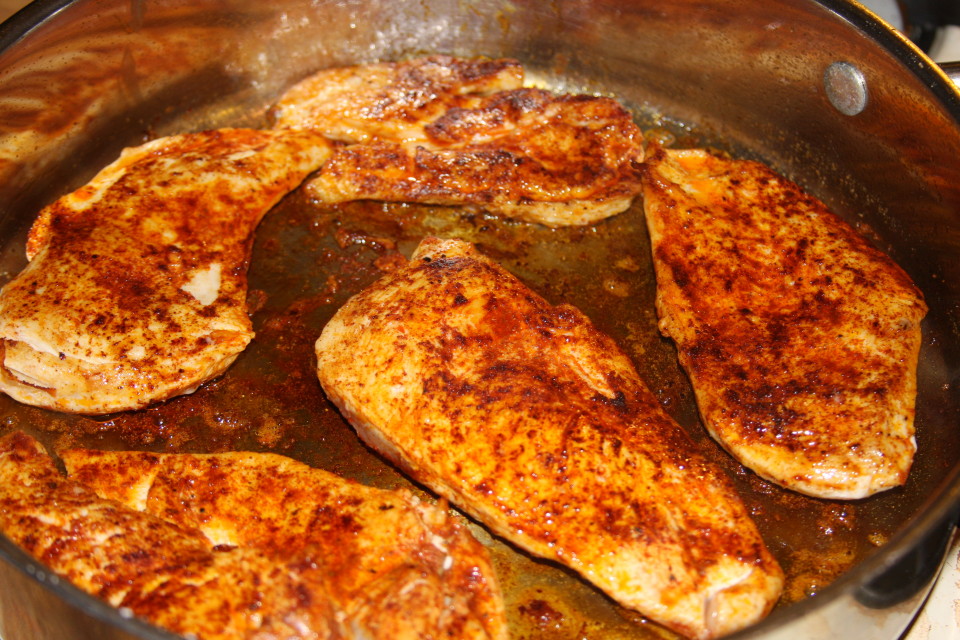
To make Chicken Paprikash, begin by browning onions in a little oil, then add meat, brown, then reduce the heat and add paprika just to warm the spice. Add water or broth – and tomatoes if you’re using them – then cover the pot and left it simmer until the meat is fully cooked and tender.
The final touch is adding the sour cream just before serving. Here, I deviate from standing procedure a bit. To me, one of the joys of paprikash is the deep, jewel-like ruby-red color of the sauce. I like to let that shine. So I leave the sour cream out, ladle the paprikash over individual bowls of wide noodles, and finish each with a dollop of sour cream, which I’ve let warm to room temperature and stirred well so it won’t come off the spoon in a cold, unattractive lump.
For a final touch, garnish each bowl of paprikash with little chopped parsley and there you have it… the color of the flag of Hungary: red, white and green! Enjoy!
Let Shisler’s Cheese House help you create this succulent, dish with our supply of Paprikash Sauce from
Havarti: The Danish Cheese, not the Cheese Danish
When we think about Danish cheeses, we often think about Danish Blue, Esrom, Danbo… but, by far the most popular cheese that is exported from Denmark is Havarti.
Havarti is a semi-soft cheese, which has a creamy buttery flavor. It goes great on the cheese board with figs and sliced bread, or melted atop a sandwich. But, what else do we know about this cheese?
The Origins of Havarti

As noted above, Havarti is a Danish cheese; but the inspiration of this delicious treat comes from one woman’s travels around Europe during the mid 1800s. The commonly accepted story is that Hanne Nielsen was the wife of a New Zealand farmer that was extremely interested in learning about cheesemaking; and, in addition to traveling around Europe, learning different techniques, she set up a farm where she perfected her craft. The town where she set up her experimental farm, called Havarthigaard, is located north of Copenhagen; and, during the mid 1900s, became the source of Havarti’s name. (Source: Havarti Cheese Production and Uses)
What is Creamy Havarti?
Creamy Havarti (flødehavarti) is different from what would be considered the “original” Havarti, in that it is made with highly pasteurized milk, such that the whey proteins are not separated from the cheese curds; so, the end product is a lot richer and creamier.
The “original” Havarti is very similar to Swiss cheese in flavor and texture–but also, in that it is typically aged around 3 months. Creamy Havarti cannot be ripened for very long because the whey protein doesn’t age very well.

The Havarti Experience
If you go to the supermarket, you will often find that there are many different kinds of Havarti. Much like chevre, this cheese is sold in varieties with fruits and/or herbs and spices, as well as original flavor. Some of the varieties you may find include cranberry, garlic, caraway, basil, coconut, and sour cream & chives; but, by far the most popular ones are dill, red pepper, and jalapeño.
Havarti is truly versatile. It is an excellent table cheese and is great on sandwiches and salads. It is a great melting cheese so, fondue and paninis should not be overlooked.
Looking for a great wine to pair with Havarti? It goes really well with just about any wine, but goes particularly well with sweet wines like Beaujolais and Riesling. If you’re going pick a red wine, try to keep with lighter-bodied wines.
Wrapping up
Havarti is certainly one of my favorite cheeses–and, I think it was one of the very first cheeses I tried when I started John Eats Cheese. If you’re looking to learn more about cheese or are looking for unintimidating cheese to start with on your journey of fromage exploration pick up some crackers and Creamy Havarti, and go to town.
Let us at Shisler’s Cheese House help you get your taste on with our supply of Havarti!
Chicken Alfredo Pasta Bake: For the Cheese and Pasta Lover
CHICKEN ALFREDO PASTA BAKE
I don’t know about you, but I love a good Alfredo. It’s rich, it’s oh so yummy. And why shouldn’t we love it? It has all the goodness of butter, cream and Parmesan. Creamy. Cheesy. Yummy. So today we’re taking good old Alfredo sauce and making a chicken pasta bake. And we’ll add more cheese plus other stuff to make a great summer pasta casserole.
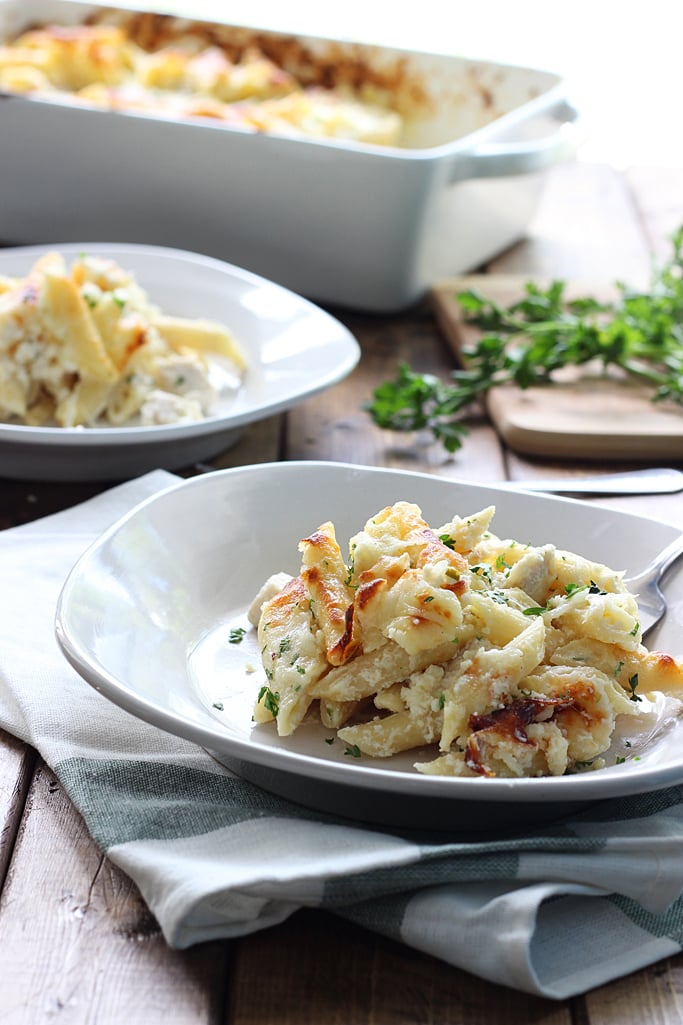
So if you’re wanting cheese, this is your dish! This makes a huge serving to go around and it heats up well. It’ll make that wet squishy sound when you mix it all up, a sign of tons of creamy cheesy power. It’ll give you long strands of cheese when you dish a serving. The kind that you’ll want to run your finger along to break. And it’ll more than satisfy your cheese craving.
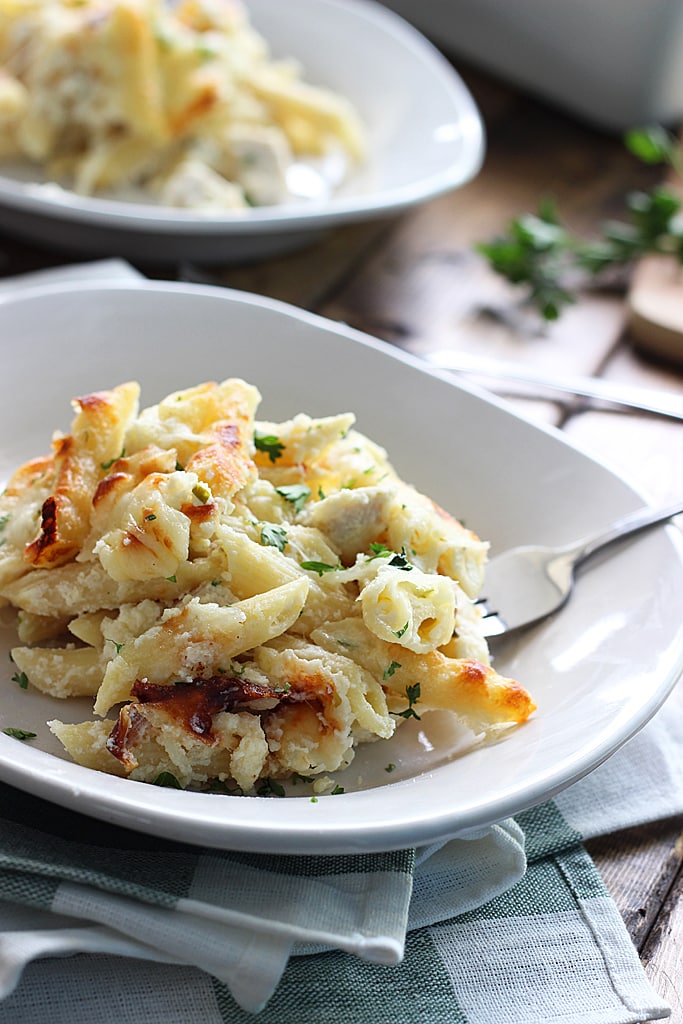
The great thing about this is how you can customize it to save you time. The best Alfredo sauce from scratch but you can use store-bought sauce. If you don’t like poached chicken, grill it. Or buy some rotisserie chicken and chop it up. And you can practically use any kind of pasta you want. Generally, penne is deal for bakes but there’s ziti and rigatoni.
Make sure to cook the pasta until the point just before it turns al dente. Then rinse it under cold water to stop the cooking process. Because if it continues cooking in the cheese sauce in the oven, it’ll get slightly mushy and mushy pasta is no fun…. to avoid this, finish off the al dente process in the oven. However, if you don’t mind or even like mushy pasta, then keep on cooking that pasta until it’s al dente, your choice…
There’s a lot of ricotta to go around, as you can see. So if you’re not big on it, you can halve the ricotta and egg portion before mixing it in with everything. Some people like it, some people don’t, again, your choice…
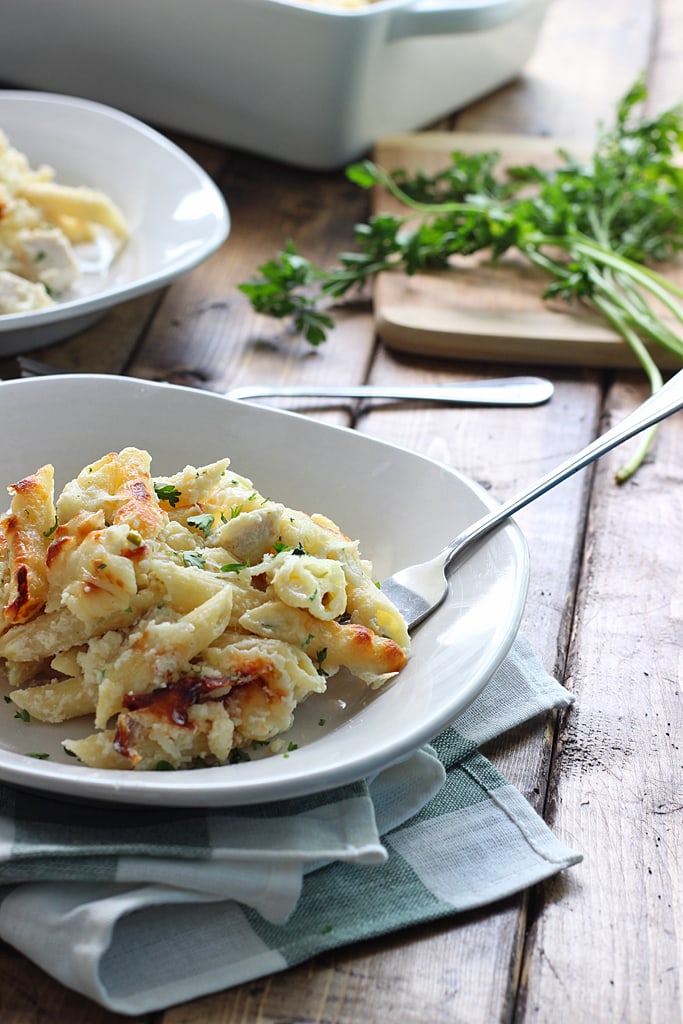
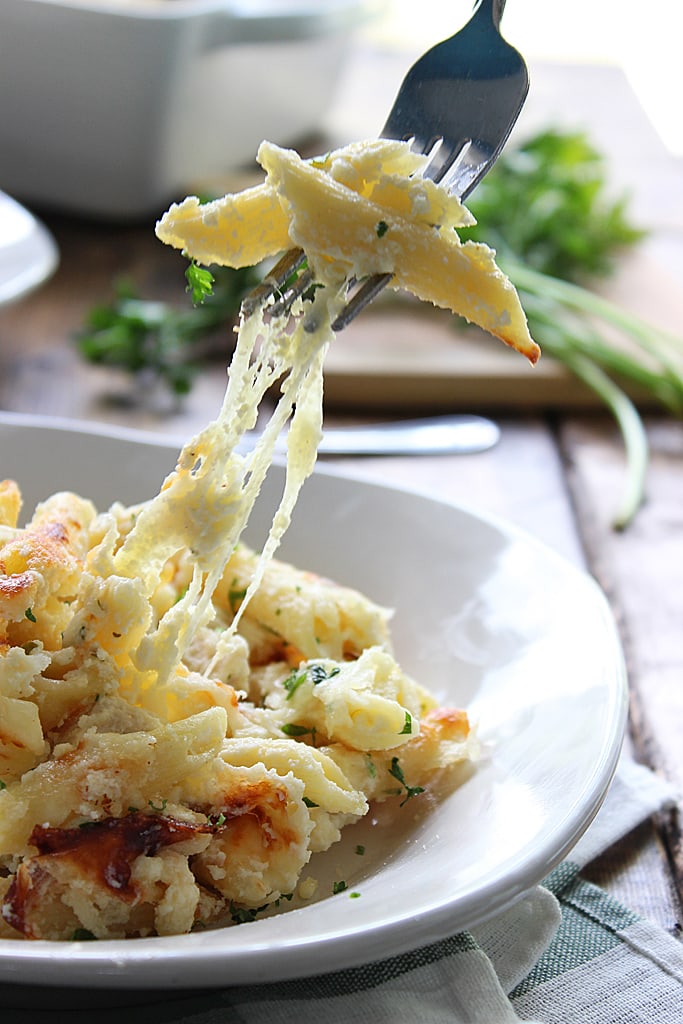
So really, if you’re looking for a fairly quick, but delicious meal idea for lunch or dinner, this one’s for you, as the amount of time it takes from start to eat is just under and hour…. not bad at all… Or if you’re a family of four and you want something for two days, here you go. And if you have a huge family, have at it. This can serve up to ten servings. The cheese is not stingy!
- 16 oz. penne/ziti/rigatoni pasta
- 2 cups Alfredo sauce
- 8 oz. sour cream
- 3 cups poached/grilled/rotisserie chicken, cubed
- 15 oz. ricotta cheese
- 1 teaspoon garlic, minced
- 2 eggs, beaten
- ¼ cup Parmesan cheese, shredded
- 1 tablespoon parsley, chopped
- Salt and pepper to taste
- 2 cups mozzarella cheese, shredded
- Cook the pasta till just before al dente
- Drain and rinse pasta under cold water to stop the cooking process
- If you’re making Alfredo sauce from scratch, see notes
- Mix pasta with the Alfredo sauce, sour cream and chicken
- Combine ricotta, garlic, eggs, Parmesan and parsley and mix throughly
- Season the pasta mix with salt and pepper to taste
- Add the ricotta mixture to the pasta and stir to combine
- Top with a thick layer of mozzarella cheese
- Bake in a 9×13 casserole dish at 350 degrees F for 30 minutes or until bubbly
- Broil at 450 degrees F for 2-3 minutes or until the cheese starts to brown
- Serve hot
What’s Better Than A Cavs’ Championship? Smoked Gouda Mashed Potatoes
Gouda, or “How-da” as the locals say, is a Dutch cheese named after the city of Gouda in the Netherlands. If truth be told, it is one of the most popular cheeses in the world, accounting for 50 to 60 percent of the world’s cheese consumption. It is a semi-hard cheese celebrated for its rich, unique flavour and smooth texture. The original cheese markets in Gouda is one of the last standing commercial cheese markets in the Netherlands. Since the name is not protected, it has become a generic classification for all cheeses produced and sold under the name Gouda.
Gouda is typically made from pasteurised cow’s milk although some artisan varieties use sheep’s or goat’s milk to produce cheeses that are going to be aged for a long time. Boerenkaas is a typical variety of unpasteurised Gouda cheese produced by the farmers from milk of cow’s grazing on the natural, low pastures of Netherlands. There are seven different types of Gouda cheese, categorized depending on age. Graskaas is young Gouda ready to be consumed within weeks of production. On the other hand, is the extra aged, Overjarig cheese which has a full-flavoured, hard, golden interior and salty flavour reminiscent of a toffee. Between the spectrums is a variety of Dutch Gouda’s classified as per the texture and age – Jong, Jong belegen, Belegen, Extra belegen, and Oud. Each cheese gets increasingly firmer in texture and richer in flavour than earlier classification. The waxed rind of the cheese also changes by the age as soft, younger Dutch Gouda cheese are identified by yellow, orange, or red wax rinds white mature cheese have black wax coverings.

In America, smoother and less flavorful commercial Gouda is popular than Dutch Gouda. Artisans in Netherlands may produce Dutch Gouda using raw milk as well as pasteurized. To enhance the flavor of the cheese, herbs, seasonings, and nuts may be blended. In Netherlands, aged Gouda is commonly used to richen soups, sauces.
Young Goudas are best paired with beer while medium cheeses taste best when paired with a fruity Riesling or Chenin Blanc. A well aged Gouda complements wines that are deeply flavored such as a rich Merlot or Shiraz. Gouda cheese may be grated, sliced, cubed or melted. It may be used as a table cheese or dessert cheese.
SMOKED GOUDA MASHED POTATOES
![]()
Fancying up mashed potatoes can take a plain Jane dish and make it a stand out yummy. Sorry if your name is Jane. What better to make something stand out than smoked gouda? Oh baby. It’s yummy. Add 1 cup for a hint of smokey goodness, and 2 cups for a heavier handed approach. Or maybe your tastes will fall somewhere in between. This is a fabulous twist on your standard taters. Live a little, right?
Time to Make It: about 30 minutes
Yield: Serves 6 to 8
Ingredients
6 large russet potatoes
6 cups chicken broth
1/2 cup butter
4 oz cream cheese
1 tsp salt
1/2 tsp white pepper
1 to 2 cups shredded smoked Gouda Cheese
Instructions
1. Bring the chicken broth to a boil in a large stockpot. (If you need more liquid to cover your potatoes, you can add in water.)
2. Meanwhile, peel and rinse the potatoes. Cut them into bite-size pieces. Pace them in the chicken broth. Return to a boil, reduce heat to medium low, and simmer until potatoes are soft, about 10 to 15 minutes depending on the size of pieces.
3. Drain the liquid from the potatoes. Add in butter, cream cheese, salt, and pepper. Use a hand mixer to whip until smooth, or mash together with a potato masher until cheese and butter are melted.
4. Mix in the Smoked Gouda until cheese is melted. Serve hot.
Be sure you stop by Shisler’s Cheese House and to grab your supply of Smoked Gouda!
RECIPE: Cheddar and Bacon Stuffed Chicken Breasts
Cheddar and Bacon Stuffed Chicken Breasts
So it’s about the end of the day at work and you’re struggling to come up with ideas of what to make for dinner. Not only that, but you also want to try to deviate away from the norm and let your taste buds reach a new level of extreme tastiness. Here is a recipe that will truly satisfy those taste buds without breaking the wallet and with simple, easy to find ingredients at the grocery store.
Cheddar-And-Bacon-Stuffed Chicken Breasts
Ingredients
1) 6 slices bacon
2) 2 boneless, skinless chicken breasts
3) Salt and pepper
4) 2 teaspoons Dijon mustard, if desired
5) 1/4 cup grated cheddar cheese
Preparation
Preheat oven to 300 degrees.
Cook bacon on stove in oven-safe skillet until cooked but not crisp. Transfer to a paper towel-lined plate.
Flatten chicken breasts to about 1/4- to 1/8-inch thickness, and lightly season with salt and pepper.
Spread a teaspoon of Dijon mustard on each chicken breast, if desired.
Lay three pieces of bacon on each chicken breast, and top the bacon with the cheddar cheese.
Roll up each chicken breast, being careful to keep the bacon and cheddar tucked inside, and secure each with toothpicks.
Place the chicken rollups back in the pan with bacon grease and cook on the stove over medium heat, turning frequently, just to brown all sides.
Transfer the pan to the oven, and bake for 25 to 30 minutes, until chicken is cooked through. Feel free to baste the chicken with some of the bacon grease while it’s baking. (I warned you this was not diet food.)
Serve hot, preferably with some of these pretzel rolls.
The Art of Cooking Amazing Bacon, A Masterpiece!
Bacon Cooking Tips
If the packaged sliced bacon is refrigerator-cold, slowly slide the dull edge of a butter knife along the length between the strips, gently rocking to separate slices. Plan ahead and take the bacon out of the refrigerator thirty minutes before cooking. The slices should separate easily.
When frying bacon, it’s important to keep a close eye on it and turn it often. It can burn in the blink of an eye. Older bacon will cook and burn almost twice as quickly as fresh bacon.
If you prefer very crispy bacon, choose thinner slices to fry up. Pour or baste off the fat as it accumulates in the pan. Use medium to medium-low heat. Cook slowly, turning often, to render out the most fat and help reduce shrinkage.
Pricking with a fork will help alleviate any curling problems. Drain breakfast bacon on paper towels.
The fat rendered from the cooked bacon is highly-prized as cooking oil for its flavor. After cooking the bacon, cool the rendered oil to room temperature and then pour through a fine sieve into a glass container. Cover and store in the refrigerator or freezer for future use. If you do not need the rendered fat, let it cool to room temperature, pour it into a disposable metal or glass container, seal, tie it up in a plastic bag, and toss it into the trash. It’s not wise to pour it down the drain, because it will coagulate and clog up the drain.
There are fancy microwave bacon cookers on the market which work well, but they are not necessary. Place a microwave-safe paper towel in a micro dish large enough to fit a single layer of bacon slices (4 to 6 slices). Cover with another paper towel. Six slices should take about 4 to 5 minutes on high, depending on the wattage of your microwave and the thickness of the bacon. Start checking after the first two minutes, and continue cooking at one minute intervals until you can judge the cooking time for the way you like it.
Consult your microwave manual for more specific times. A rotating base in the microwave is highly recommended for even cooking, and most come with one built-in these days. Remember that foods continue to cook even after the timer goes off in a microwave, so let it rest a few minutes before you dive in to let it crisp up and avoid burns. Curly bacon never bothers me, but this method reduces curling of the bacon.
Bacon can also be easily baked in the oven, resulting in amazingly flat slices. Preheat oven to 400 degrees F. Place a rack inside a baking sheet. Lay out slices and bake for 10 to 15 minutes, depending on desired doneness level. Voila! Crispy bacon with no curls. You can also use your broiler, but I don’t recommend it. First of all, the splatters not only make a royal mess, but also cause flares. Secondly, it requires much more attention. Stick with frying, microwaving or baking.
How can you reduce splattering problems? Part of the problem arises from today’s quick salt-brining method (known as pickle-curing) used by producers. The liquid naturally soaks into the meat, and you know what happens when liquid hits hot oil — snap, crackle, pop! Be sure the bacon slices are cold from the refrigerator and start with a cold pan. Use medium to medium-low heat and take your time cooking the slices, turning often. It’s preferable to thaw frozen bacon in the refrigerator to reduce moisture, but even then some of the moisture may naturally seep out. Towel off the slices before cooking to avoid excess splattering.
If you must watch your fat intake, lean smoked ham or prosciutto can be substituted in many recipes where the rendered bacon fat is not needed. Turkey, chicken and vegetarian bacon products are also available.
Most slab bacon is sold with the rind attached. Remove the rind before using. Render the fat from the rind by frying and you have cracklings, a favorite Southern snack.
At Shisler’s Cheese House, we carry an amazing inventory of Streb’s Meats Smoked Bacon. Be stop by our store and pick some up today!
